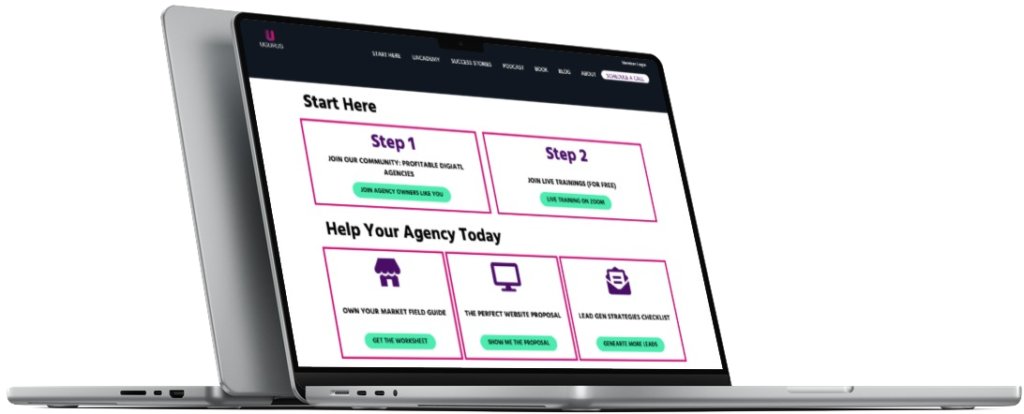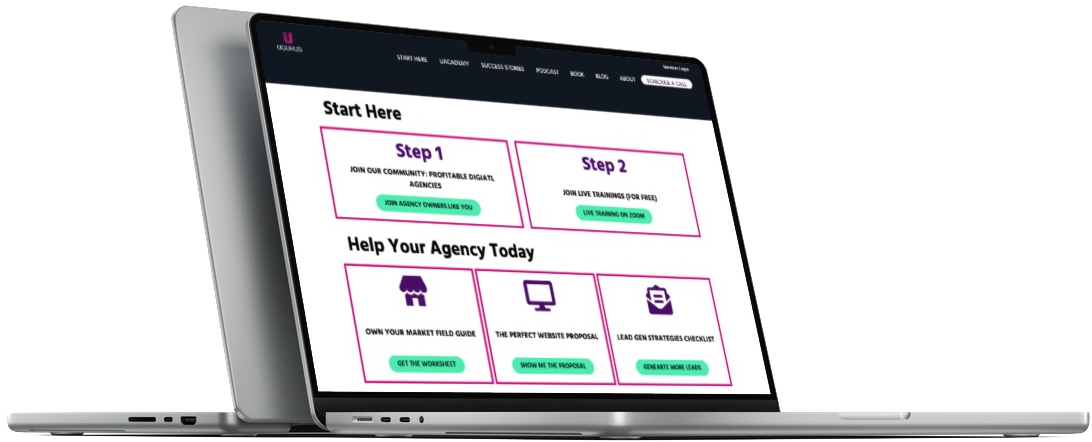Most people understand the concept of creating processes and systems in their business. But many have difficulties in how to translate theory into actionable steps.
Today, I’m going to walk you through my process, hopefully giving you an idea of where to start and how to tackle such a daunting task.
Define Your Key Objective
One of the biggest questions $10K students ask me is,“How do you translate everything you’ve collected from your clients through discovery and meetings into actionable tasks for your designer and developer?”
It’s a great question and one essential to your ability to scale. Without addressing how you offload information AND make sure tasks are completed efficiently, you can’t grow. This is one of the main issues we dealt with when transitioning from low to high paying clients.
First you need to understand that your individual processes create your bigger systems. If you want to create strong business systems, first, you’ve got to make sure your processes are air tight.
To make sure this is happening, you need repeatedly ask yourself this: How does all of this information translate to my team at the end of the day? How can I give my team the ability to execute independently of others?
If people are confused – at any step of a process – your system is broken. Your entire focus has to be on clearly communicating information to tasks. It should always work, no matter who you plug into it.
Automate to Liberate
No two clients are the same, but there are common denominators in all projects.You’re looking to automate as much as possible. This frees up you and your team to do better work for bigger clients.
Take, for example, all of the little things that take time, but are easily forgotten. Things like sending welcome emails to kick off projects or sending invoices when a project is complete. Will missing them destroy projects? Probably not. But they’re important steps that keep clients comfortable. If you haven’t defined how they’re handled, missteps can occur.
Identifying that these emails and invoices are basically the same for every client allows us to craft messaging ahead of time. Some need slight alterations depending on project specifics, but overall, these are things we can do in advance. Additionally, identifying a particular person to handle each task saves everyone a lot of time.
Another example is analytics. New types of analytic software often become available and they’re good for every site. It pays to know this and to decide who’s responsible for implementing new software or updates. Ask your team who wants to be responsible for (or is capable of) doing each task.
This has huge benefits for the entire team. It not only allows the team member to anticipate and own the task, but it gives them a chance to have a say in how it gets done. All of this increases engagement, collaboration, and quality all around.
Break It ALL Down
Aside from identifying steps that can be automated, we broke down every aspect of business- from discovery to completion. I won’t lie, this takes time and isn’t always easy. Being open to adding and subtracting tasks as you go makes it a little easier, but it still takes work.
Once we talked through all of our processes, we turned them into a series of checklists. Our outline initially consisted of 164 foundational steps for every single project.
Even though we were already doing some of the tasks we identified, we realized some weren’t being dealt with consistently. The biggest advantages of defining these processes boiled down to two main points:
- It enabled each member of the team to own their tasks.
- It allowed me to grow my business beyond myself (in other words, scale).
This is not an exercise in listing everything. Start with what you know by using these three phases:
- Blocking (5-7 big items) – We started with the big buckets of discovery, design, programming, & quality and assurance.
- Break down (Break each of these 10-20 into smaller steps) – We then broke each of the four buckets into smaller tasks.
- Refinement (Put the list into practice to add/subtract items) – We put the lists into action, paid attention to each step and refined the lists as we realized each stage.
Anticipation = Satisfaction
When defining your processes and creating your systems, you have to think about your business from the client’s perspective as much as your own. Above all else, your clients want to see progress; to know their money is being well spent.
We ask new clients to pay for discovery and immediately add them to our system (Basecamp) with a personal invitation. As soon as they accept, they can see 160+ tasks that need to happen to getting their site live.
Seeing the process from the inside gets them excited – before they even know how much the project will cost.
Knowing you’ll be looping in clients, you need to decide what they should see.
Do you want the client to know CSS is part of the project? Why? Do they need to know it requires more time than they think? If so, you may need to include it.
Also, don’t tell them that CSS takes “two weeks.” Break the task down further by showing that the first round of CSS will take a week and the second round will take another week.
Your defined processes may be basic at first. That’s okay, as long as you’re giving your client something to hang on to.
Final Thoughts
Your checklists shows clients the complexity of their project and keeps everyone on your team on track. These lists provides clear boundaries for everyone, leading to greater satisfaction all around. (To read more about the power of checklists, check out Atul Gawande’s book, The Checklist Manifesto.)
And one final note: my team can’t move a project forward without final confirmation from me. While automation is great, you also need to build in fail safes and final checks.
Without clearly defined processes and systems, you make your entire business dependent on you, instead of your team. If growth is in your future (and it should be!), then get started defining your process today.
Questions or comments about how to define your systems or processes? Put them in the comments.
GET YOUR FREE AGENCY ACCELERATOR PACKAGE






